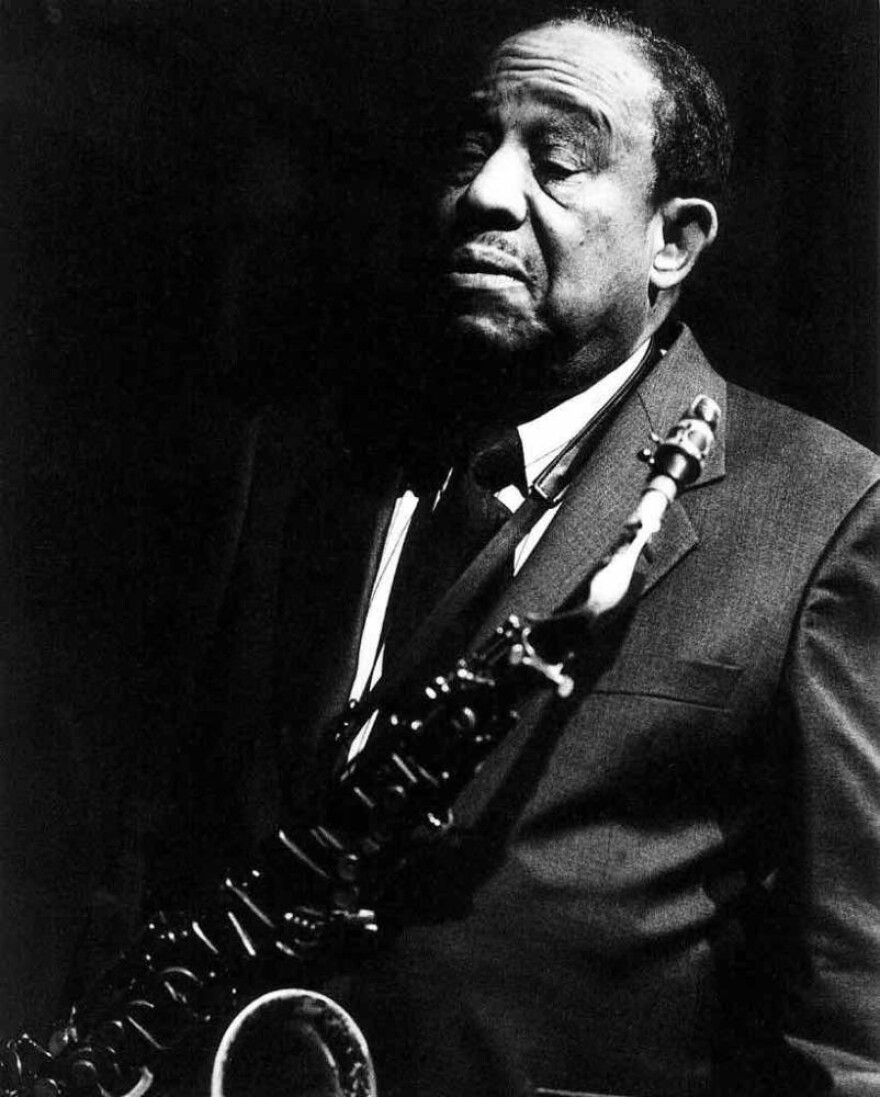[Ed. note: This post was originally published on November 1, 2016]
There are few more telltale signs of the jazz critics’ conceit that innovation is the truest marker of artistic value than the condescending manner in which Lou Donaldson is discussed. Even writers who seem to dig him end up damning him with faint praise. Richard Cook (a co-author of the essential Penguin Guide to Jazz on CD), in his book-length “biography” of Blue Note Records, says that Donaldson “was the archetypal Blue Note saxophonist…but he wasn’t one to carry the torch of innovation.” In the context of a 1957 album, Wailing With Lou, Cook says that Lou’s playing remains “undiluted by anything modern…Donaldson’s jazz is an entertainer’s art, the flipside to Sonny Rollins’s steel-backed art music.” Rollins was a label-mate of Donaldson’s at Blue Note in 1956-57, and thus the comparison, but while it may have applied in that narrow time frame, I would argue that the Saxophone Colossus has moved a lot closer to embracing the “entertainer’s art” than Papa Lou has to “art music.”

In his biography of Clifford Brown, who made his first jazz album in June 1953 on a Blue Note date that he co-led with Donaldson, Nick Catalano describes the saxophonist as “the leading Charlie Parker clone of the hour,” then goes on to say he was “a truly gifted player…who never did receive proper credit.” Speaking of which, among more established writers on jazz, Lou is virtually non-existent. He’s never even mentioned in the 892 pages of Whitney Balliett’s Collected Works: A Journal of Jazz, and he’s named only once in the two volumes of Gary Giddins’s collected writings, Visions of Jazz and Weather Bird. He doesn’t fare much better in Alyn Shipton’s monumental A New History of Jazz, where he’s briefly mentioned in a passage on Horace Silver. Brian Priestly gives him modest due in Jazz: The Essential Companion, in acknowledging Lou for having “historically…paved the way for such altoists as Cannonball Adderley, Gary Bartz, and even David Sanborn.”
I take note of these patronizing attitudes toward Donaldson not only with respect to the remarkably sustained quality of the music he’s played over the course of his 65 year-long career, but in light of the continual decline in the audience for jazz. Donaldson is a rare example of a modern jazz virtuoso who’s maintained a strong following playing hard-edged bebop, groove-driven boogaloo and soul jazz, stirring ballads, and occasional turns as a wry-voiced singer of double-entendre blues. Like legions of Donaldson followers worldwide, I can’t recall ever hearing a performance by him that didn’t make me feel just a little bit better. On record, in person, as a leader, and early on as a sideman with Milt Jackson, Thelonious Monk, and Art Blakey, Donaldson swings soulfully. Among the alto saxophonists who emerged after Charlie Parker had defined the new way of playing the instrument, he remains the most blues-oriented keeper of the flame, not to mention one of the few players still on the scene who rubbed shoulders with Bird.
JazzWax blogger Marc Myers credits Lou as a pioneer in two modern jazz developments, citing his 1952 Blue Note session with Horace Silver and Art Blakey as an early example of Hard Bop, and his 1957 album with Jimmy Smith as a prototype for the organ combo phenomenon of the fifties and sixties. Speaking of his early development as an alto player, Donaldson told Myers, “I heard Charlie Parker and my whole approach to the saxophone changed. I got what he was doing instantly. I had seen him a few years earlier in Chicago, when I was on leave, when he was with Billy Eckstine’s band. Parker was so messed up he could hardly play anything. The suit he wore looked like he had been wearing it for six months. At first I thought he was a bum. Then someone told me he was the guy I liked so much on the Jay McShann records.”
(Click here to read the entire JazzWax interview.)

Today is Lou’s 90th birthday, and he’s still going strong. He’ll be sharing his joyous, down-home music tonight before a packed house at Dizzy’s in New York, and I’ll devote most of this evening’s Jazz a la Mode to a Donaldson retrospective. Here he is playing his classic original “Blues Walk” with organist Jimmy Smith, guitarist Kenny Burrell, and drummer Grady Tate.





